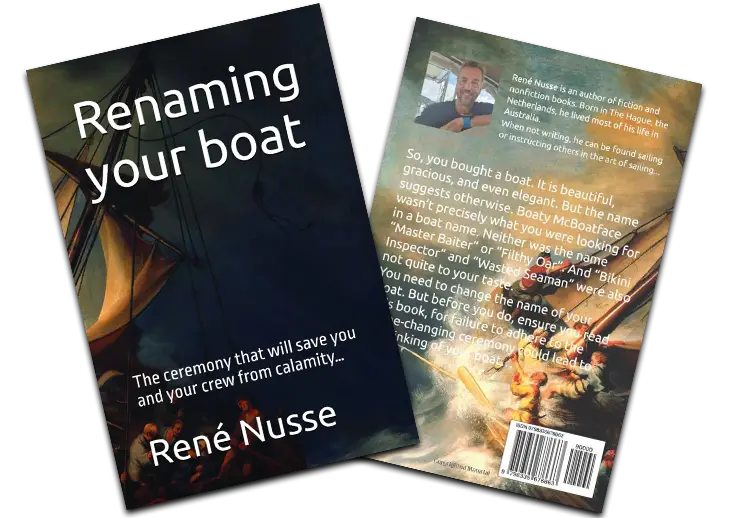Minimum Budget for Sailing Around the World
Sailing around the world is a dream many share — the promise of freedom, discovery, and adventure on the open sea. But before you hoist your sails, one crucial element you’ll need to navigate first: the budget. Contrary to popular belief, you don’t have to be a millionaire to sail around the world — but it does require strategic planning, realistic expectations, and financial discipline.
ALL FIGURES ARE IN US DOLLARS
1. The Boat: Your Floating Home
Cost: $20,000 – $500,000+
The biggest expense by far is the boat itself. The good news is you don’t need a brand-new, state-of-the-art yacht. Many long-distance sailors purchase older, well-maintained cruising boats for $30,000–$100,000. Popular, proven brands include:
- Tayana
- Elan
- Pacific Seacraft
- Hallberg-Rassy
- Beneteau/Oceanis (with upgrades*)
- Hanse
- Amel
- Van de Stadt
Consider some of the following features in terms of blue water sailing…
- Fixed vs. Folding vs. Feathering Propellers (Screws)
- Full vs Fractional Rig
- Keel vs Deck-Stepped Mast
- Sail Material
- Wood, aluminium, steel, fibreglass or concrete hulls
- Comparing a sloop, ketch, and yawl
- What is the best anchor for a sailboat
Budget Tips:
- Avoid the “plastic fantastic” production boats like Beneteau, Jeanneau, Dufour, Bavaria, etc.
- Buy the smallest boat you’re comfortable living in.
- Opt for simplicity: fewer systems = fewer repair costs.
- Prioritise safety and seaworthiness over luxury.
2. Refitting and Equipment
Cost: $10,000 – $100,000
Even a “ready-to-cruise” boat will likely need upgrades or replacements. The fact is that you need to make your boat “yours” and that costs money:
- Sails and rigging
- Electronics (GPS, radar, AIS)
- Safety gear (liferaft, EPIRB)
- Solar panels/wind generator
- Watermaker (optional but helpful)
- Dinghy and outboard
Budget Tips:
- DIY when possible.
- Buy used gear or wait for sales.
- Join sailing forums and communities to find deals.
3. Daily Living Costs
Monthly Cost: $1,000 – $3,000
Your cost of living will vary based on your lifestyle and where you sail. Developing regions (e.g., Southeast Asia, Central America) are significantly cheaper than Europe or Australia.
Typical Expenses:
- Food and drink
- Fuel and propane
- Internet/data plans
- Marina fees and moorings
- Customs and visa fees
- Entertainment and excursions
Budget Tips:
- Anchor instead of docking in marinas.
- Cook on board and limit eating out.
- Travel slowly to minimise fuel and visa costs.
4. Maintenance and Repairs
Annual Cost: 5–10% of Boat’s Value
Saltwater is unforgiving. Even well-maintained boats need regular upkeep. Expect unexpected repairs in remote places — and they won’t be cheap.
Budget Tips:
- Carry spares and tools.
- Impellers, water pumps, alternator, prop…
- Learn basic marine systems and engine work.
- Establish an emergency fund.
5. Insurance
Annual Cost: $1,000 – $5,000
Marine insurance varies widely based on your boat, location, and coverage. Some sailors go uninsured (self-insured), especially in areas where full coverage is limited or expensive.
Budget Tips:
- Consider liability-only policies in safe areas.
- Read the fine print — some insurers exclude hurricane zones or piracy-prone regions.
6. Communications and Navigation
Startup: $500 – $2,000 | Monthly: $50 – $150
Staying connected offshore requires tools like:
- Satellite messengers (Garmin inReach, Iridium GO!)
- SSB radios
- Nav apps (Navionics, OpenCPN)
- Paper charts and cruising guides
Budget Tips:
- Use free/open-source navigation tools.
- Download offline resources before passages.
7. Contingency Fund
Recommended: $5,000 – $20,000
Unexpected events — medical issues, boatyard delays, equipment failures — can quickly derail a voyage. A reserve fund gives you flexibility and peace of mind.
Sample Budget: Moderate, Frugal Cruiser
| Expense Category | Annual Estimate |
|---|---|
| Boat purchase (used) | $50,000 (one-time) |
| Refitting & equipment | $20,000 (first year) |
| Living expenses | $18,000 ($1,500/month) |
| Maintenance/repairs | $4,000 |
| Insurance | $2,000 |
| Communications | $1,200 |
| Contingency fund | $10,000 |
First-Year Minimal Total: ~$105,000
Ongoing Annual Minimal Cost: ~$25,000
Conclusion: Choose Adventure Over Luxury
Sailing around the world doesn’t have to be extravagant. Many couples, solo sailors, and families have done it on tight budgets with small, sturdy boats and a minimalist lifestyle. The keys are:
- Planning thoroughly
- Expecting the unexpected
- Embracing frugality and flexibility
With the right mindset, a solid vessel, experience and knowledge, and careful budgeting, the world’s oceans are within reach—not just for the wealthy but also for the adventurous.
Note that this is a budget-based article. Enough money doesn’t guarantee a successful global navigation. Seamanship, experience, and knowledge are more essential enablers for success than money.
Author
-

Rene is a keelboat instructor and sailing coach in the Mandurah area WA. He is also the author of several books about sailing including "The Book of Maritime Idioms" and "Renaming your boat".
View all posts



1 thought on “Minimum Budget for Sailing Around the World”
It covers essential expenses such as the cost of purchasing a seaworthy vessel, maintenance, provisioning, and unexpected repairs. The inclusion of real-life examples and scenarios adds a practical touch, making the information relatable.
I appreciate how the article doesn’t just focus on the financial aspects but also delves into the lifestyle adjustments and skills required for such a journey. It underscores the importance of being prepared for the challenges of long-term sailing, both financially and mentally.
Overall, this piece serves as a comprehensive guide for aspiring sailors, providing a realistic perspective on what it takes to sail around the world on a budget. It’s both inspiring and grounding, reminding readers that with determination and careful planning, the dream of circumnavigation is within reach.